This collection brings together high rises and structures from different continents that redefine conventional building standards through their exceptional architecture. From the spiral rotation of Turning Torso in Malmö to the distinctive form of the CCTV Headquarters in Beijing, these buildings showcase innovative approaches to construction and design. The selection includes Burj Khalifa in Dubai, currently the world's tallest building at 2,717 feet (828 meters), as well as Marina Bay Sands in Singapore with its distinctive rooftop terrace. The collection also presents cultural facilities such as the Guggenheim Museum Bilbao by Frank Gehry with its sculptural titanium facades and the Walt Disney Concert Hall in Los Angeles. Additional examples are the Absolute World Towers in Mississauga, known as the Marilyn Monroe Towers for their twisted structure, as well as Shanghai Tower, which rises 2,073 feet (632 meters). The Guangzhou Opera House and the Helix Bridge in Singapore demonstrate the diversity of contemporary architectural solutions. Each of these structures combines technical innovation with architectural vision and shapes its city's skyline. From historic skyscrapers like the Empire State Building to modern developments like Bosco Verticale in Milan with its planted facades, this selection offers insights into the evolution of high rise construction worldwide.
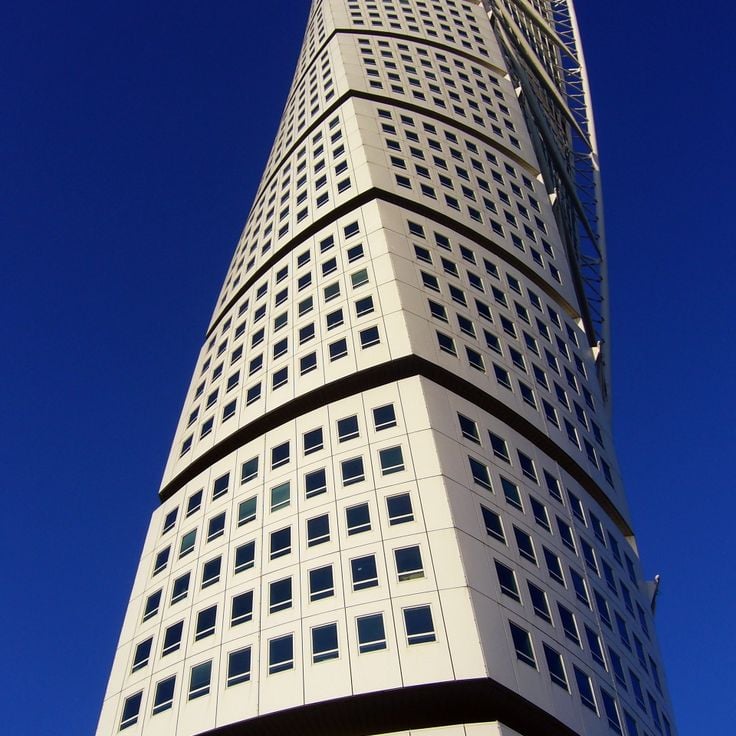
Malmö, Sweden
Turning TorsoThe Turning Torso is a 623-foot (190-meter) residential skyscraper in Malmö that distinguishes itself through its twisting form. The building consists of nine cube-shaped segments that rotate around a central axis, completing a 90-degree turn from base to top. Spanish architect Santiago Calatrava designed this structure, inspired by one of his own sculptures depicting a human figure in twisting motion. Completed in 2005, the building contains 54 floors and houses both residential apartments and offices. The tower is the tallest building in Scandinavia and marks the city's skyline as a widely visible symbol of contemporary architecture.
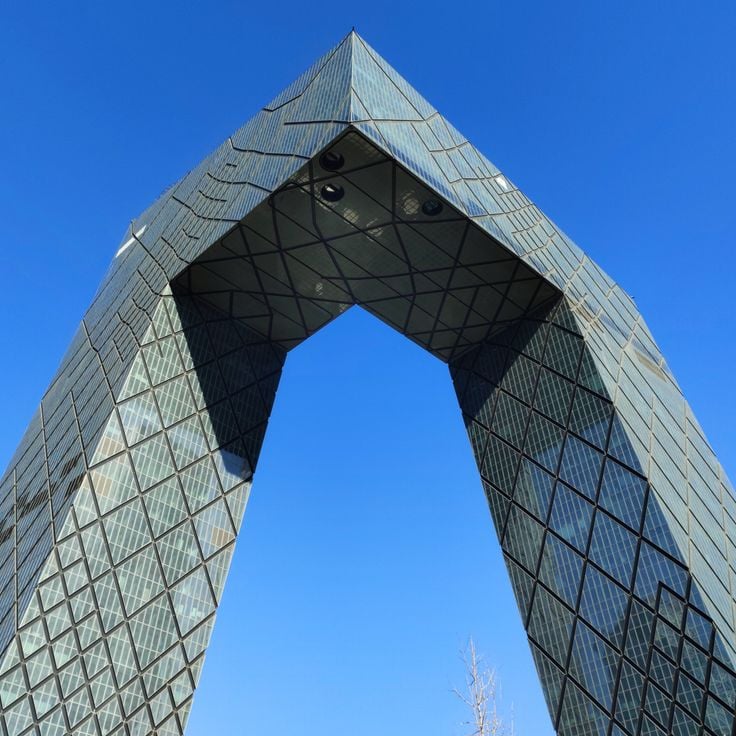
Beijing, China
CCTV HeadquartersThe CCTV Headquarters presents an architectural challenge to traditional high-rise norms through its unconventional loop form. The building consists of two leaning towers connected at the base and top by horizontal sections, creating a continuous three-dimensional structure. This design required advanced engineering techniques to ensure structural integrity while defying the typical vertical principles of skyscraper construction. The headquarters serves as the central location for China Central Television and embodies a bold approach to contemporary architecture, combining innovative construction methods with the functional requirements of a media center.

Singapore, Singapore
Marina Bay SandsMarina Bay Sands is an architectural landmark in Singapore consisting of three 55-story towers connected by a 340-meter-long (1,115 feet) Skypark platform. This structure houses one of the world's largest elevated infinity pools at a height of 191 meters (627 feet), offering panoramic views across the city and harbor. Completed in 2010, the complex includes a hotel with 2,560 rooms, a convention center, a casino, and the ArtScience Museum with its distinctive lotus-shaped form. The engineering achievement includes a cantilevered deck extending 66 meters (217 feet) beyond the north tower, redefining the possibilities of high-rise construction.
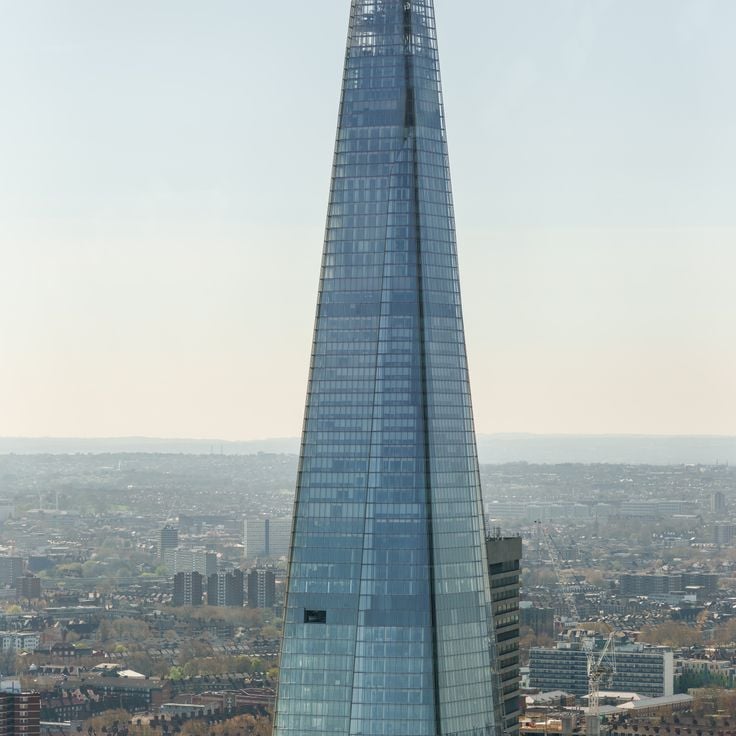
London, United Kingdom
The ShardThe Shard stands 1,016 feet (310 meters) tall in the London skyline, distinguishing itself through a pyramidal glass form that tapers to a sharp point. This architectural design departs from conventional high-rise construction and represents a demonstration of contemporary engineering. The tower houses offices, restaurants, a hotel, and an observation deck that provides extensive views across the city, connecting functional use with unconventional design principles. The building's form challenges traditional skyscraper norms through its geometric approach and transparent glass facade that reflects changing light conditions throughout the day.
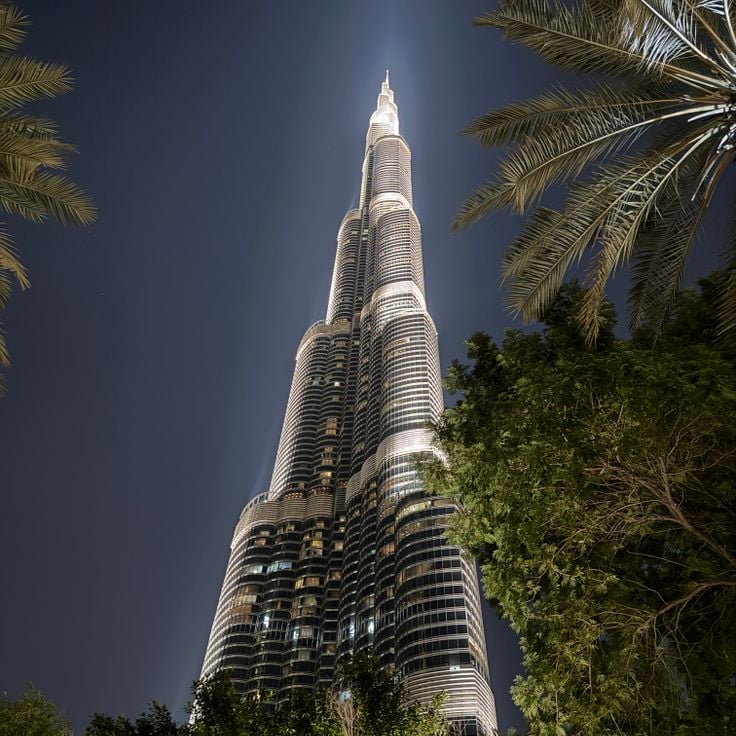
Dubai, United Arab Emirates
Burj KhalifaThe Burj Khalifa is the tallest building in the world, reaching a height of 2,717 feet (828 meters). This Dubai skyscraper features 163 floors and combines advanced construction techniques with Islamic architectural motifs. Its Y-shaped floor plan maximizes views of the Persian Gulf while minimizing wind loads. The building houses residential units, offices, a hotel, and observation decks. Its slender, spiraling form and aluminum and glass facade make it a landmark that redefines the limits of vertical architecture.
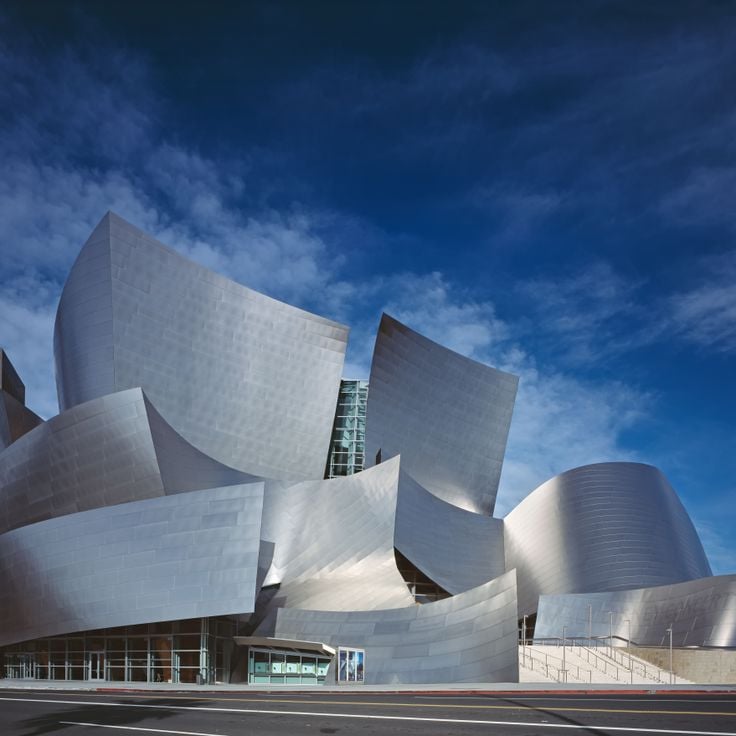
Los Angeles, United States
Walt Disney Concert HallThe Walt Disney Concert Hall is a masterwork of contemporary architecture featuring undulating stainless steel panels that resemble billowing sails. Designed by architect Frank Gehry and opened in 2003, this concert hall serves as home to the Los Angeles Philharmonic Orchestra. The sculptural facade comprises over 12,700 individually shaped steel panels that create different visual effects depending on the time of day and light conditions. This concert venue combines innovative construction techniques with superior acoustics, demonstrating how unconventional design approaches can create functional spaces for the performing arts.

Bilbao, Spain
Guggenheim Museum BilbaoThe Guggenheim Museum Bilbao redefines contemporary architecture through its curving titanium panels and limestone forms. This Frank Gehry structure combines organic lines with reflective metal surfaces, creating a building that transforms with changing light and viewing angles. The museum stretches along the Nervión River, and its irregular volumes and interlocking planes break from conventional high-rise geometry. The deconstructivist forms and sculptural qualities make this building an example of innovative structural design that has influenced urban development since its opening in 1997.

Mississauga, Canada
Absolute World TowersThe Absolute World Towers are a pair of twisted residential towers in Mississauga that earned the nickname 'Marilyn Monroe Towers' due to their curved silhouette. The two buildings rise with a continuous rotation from base to top, with each floor slightly offset from the one below. This architectural approach breaks from the typical rectangular form of high-rise buildings and demonstrates innovative construction techniques. The towers represent a significant contribution to modern architecture and have shaped the skyline of Mississauga.
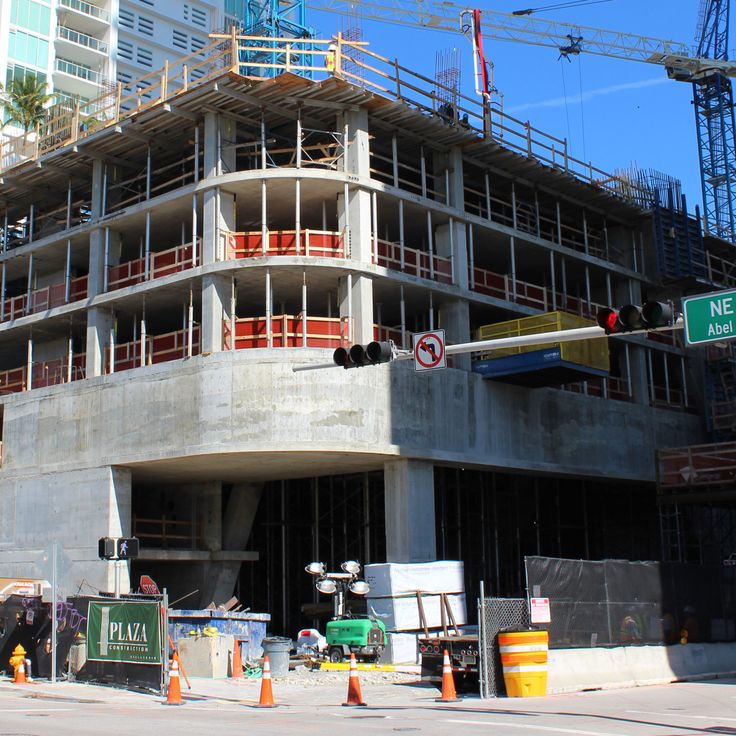
Miami, United States
One Thousand MuseumOne Thousand Museum is a luxury residential tower in Miami distinguished by its prominent exoskeleton. Designed by Zaha Hadid, the structure features curved white concrete ribs that wrap around the glass facade, serving both structural and aesthetic functions. The building rises 62 stories and combines advanced engineering with sculptural elements. The exoskeleton construction allows for column-free interior spaces and creates a distinctive silhouette along Miami's skyline. This residential tower demonstrates how load-bearing structures can be moved outward to merge architectural innovation with practical functionality.
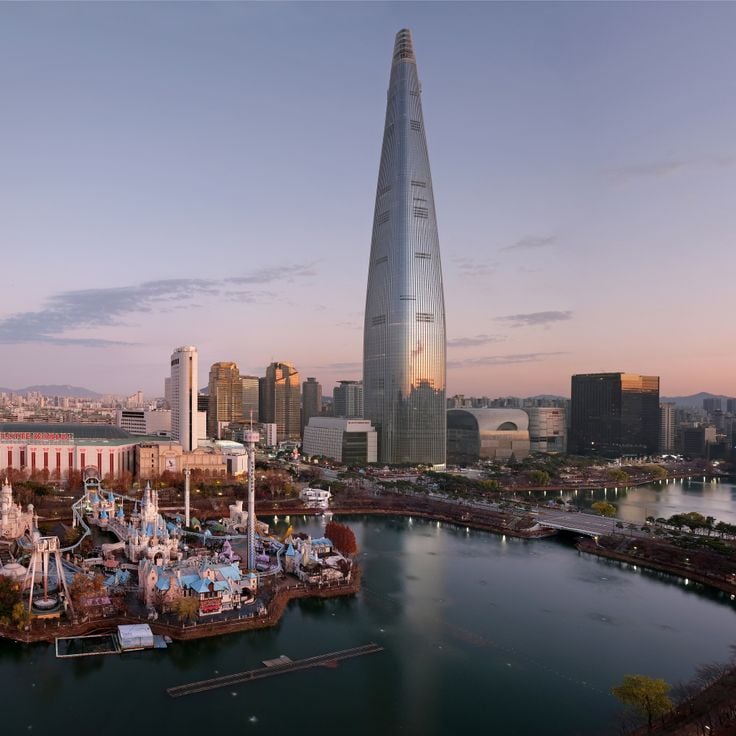
Seoul, South Korea
Lotte World TowerThe Lotte World Tower rises 1,820 feet (555 meters) above South Korea's capital, making it one of the tallest structures in Asia. This tower features a slender, tapering form inspired by traditional Korean ceramics and calligraphy brushes. The facade consists of white glass that reflects varying light conditions depending on the time of day and weather. The tower includes an observation deck at approximately 1,640 feet (500 meters), offering views across Seoul. With its conical silhouette and integrated earthquake-resistant technology, the Lotte World Tower represents modern Korean architecture and engineering.
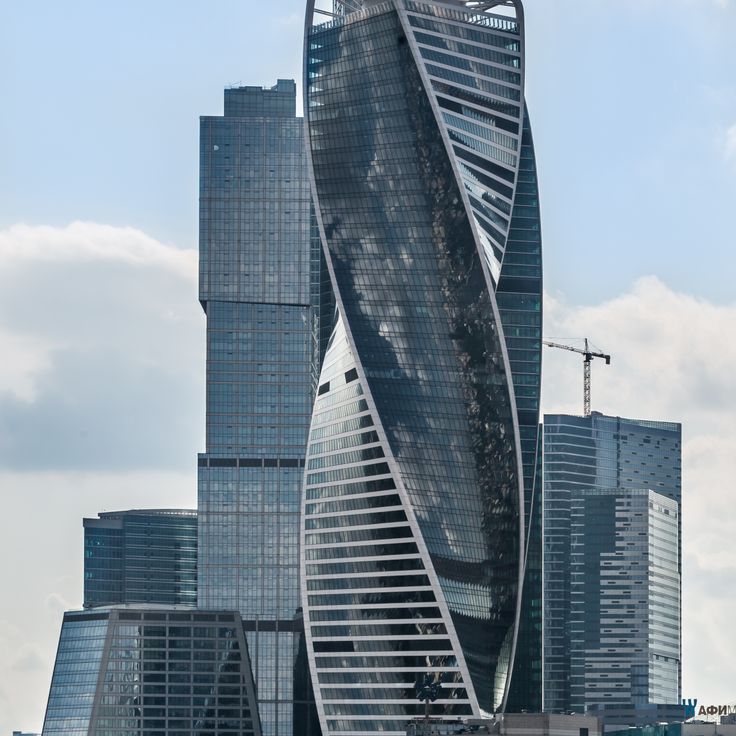
Moscow, Russia
Evolution TowerThe Evolution Tower is a spiral-shaped skyscraper in Moscow distinguished by its twisted architecture. The building rotates 135 degrees from its foundation to its peak, reaching a height of 837 feet (255 meters) across 54 floors. This construction was achieved without a central support column, with each floor slightly offset from the one below. The tower houses office spaces and represents a contemporary interpretation of dynamism in modern construction.
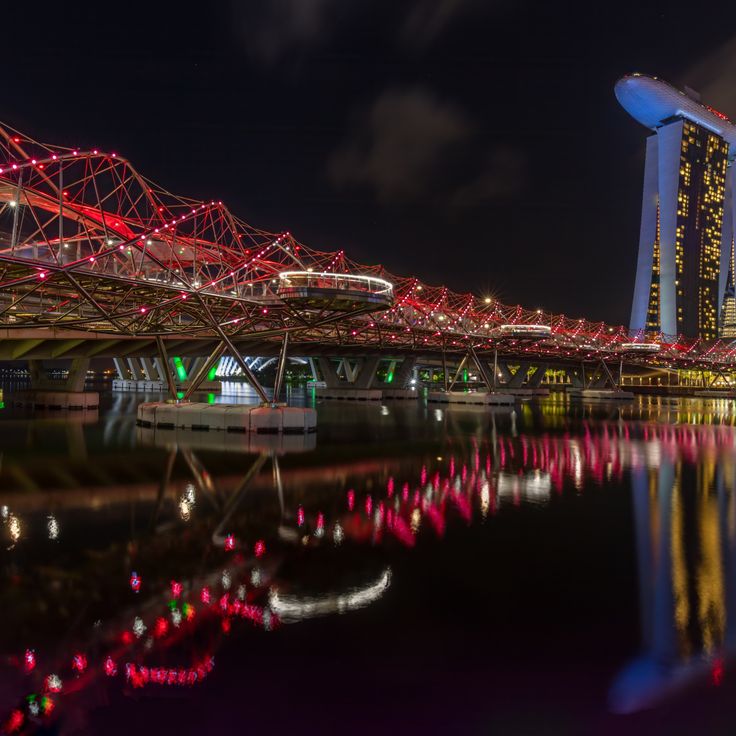
Singapore, Singapore
The Helix BridgeThe Helix Bridge is a pedestrian bridge in Singapore whose curved steel construction draws inspiration from the double helix structure of DNA. This bridge connects Marina Centre to Marina South across the Marina Bay waters and spans 920 feet (280 meters). The structure consists of two interwoven spirals made from stainless steel and carbon steel that form a lattice framework. At night, LED lights illuminate the complex geometry and emphasize the scientifically inspired form. The bridge features four viewing platforms from which visitors can observe the harbor basin and surrounding cityscape. As a pedestrian connection, it serves functional purposes while demonstrating how biological patterns can be translated into architectural design.
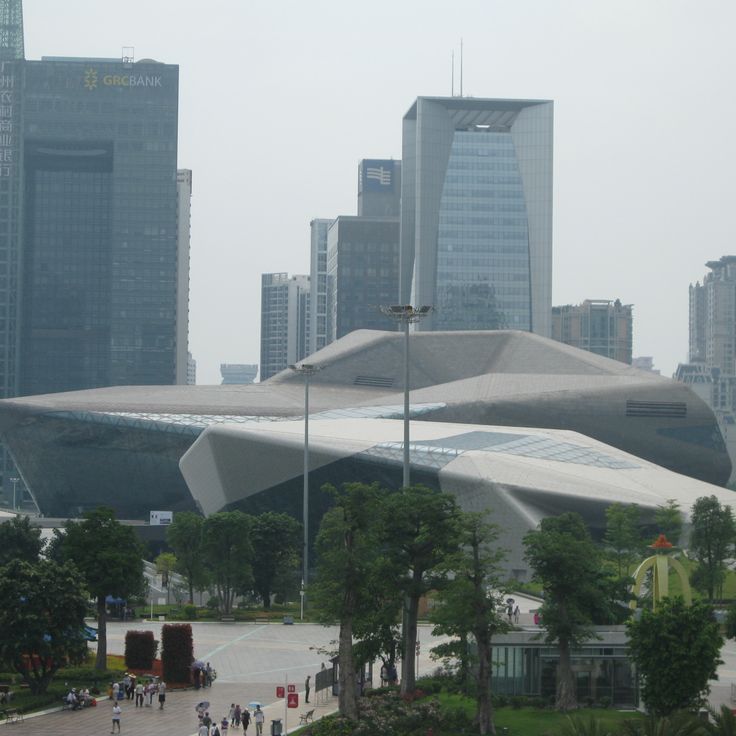
Guangzhou, China
Guangzhou Opera HouseThis opera house was designed by Zaha Hadid to resemble two smooth pebbles resting on the banks of the Pearl River. The flowing lines and organic structure of the building reflect the natural environment and create a connection between architecture and landscape. The asymmetric geometry and continuous surfaces without right angles represent a departure from traditional theater buildings. The opera house contains two main halls and employs innovative construction methods to achieve the complex forms that have become a defining feature of Guangzhou's skyline.
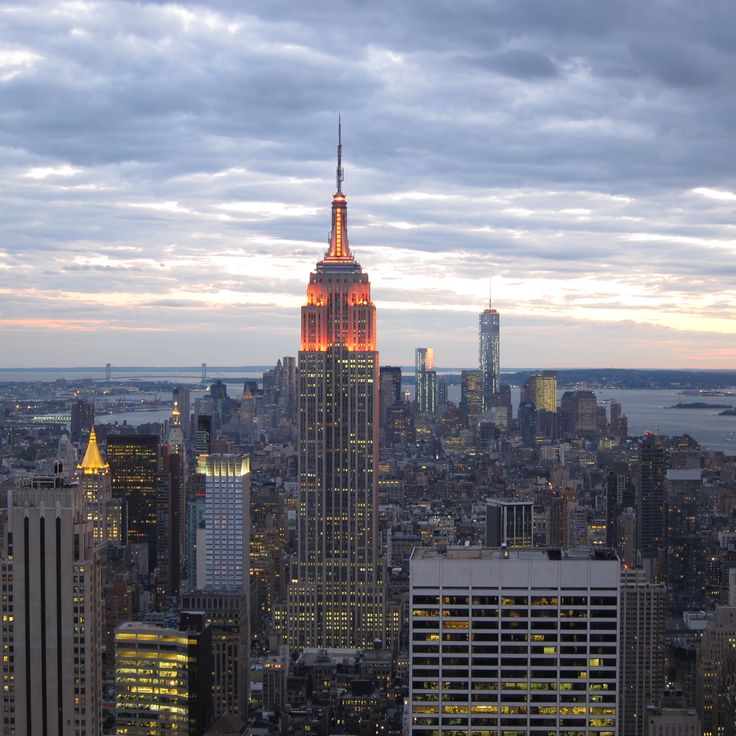
New York, United States
Empire State BuildingThe Empire State Building is a historic skyscraper completed in 1931 that held the title of the world's tallest building for more than four decades. The structure features a distinctive setback design with a central spire that demonstrated innovative construction techniques at the time of its completion. The building rises 102 stories to a height of 1,250 feet (381 meters) at its roofline. The facade combines limestone and granite with chrome-nickel steel ornamentation, reflecting architectural principles of the 1930s. This tower redefined vertical architecture in the 20th century and remains a significant example of early high-rise design in Manhattan.
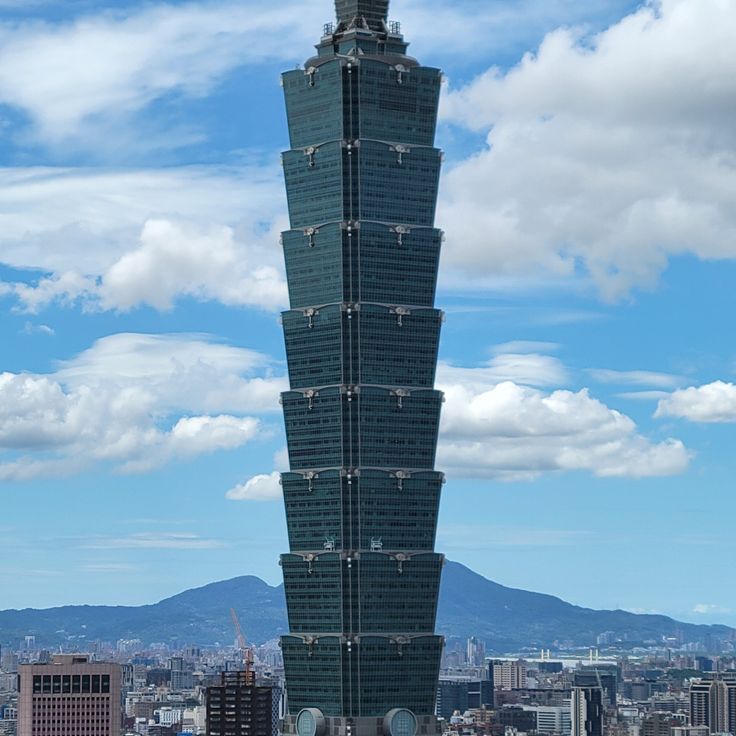
Taipei, Taiwan
Taipei 101This skyscraper in Taipei takes the form of a bamboo stalk, symbolizing growth and adaptability in Chinese culture. The 1667-foot (508-meter) tower employs advanced engineering to withstand earthquakes and typhoons, including a 660-ton tuned mass damper suspended between the 87th and 92nd floors. The facade's outward-curving segments recall traditional Asian pagodas, merging modern construction technology with cultural heritage. From 2004 to 2010, Taipei 101 held the title of the world's tallest building.
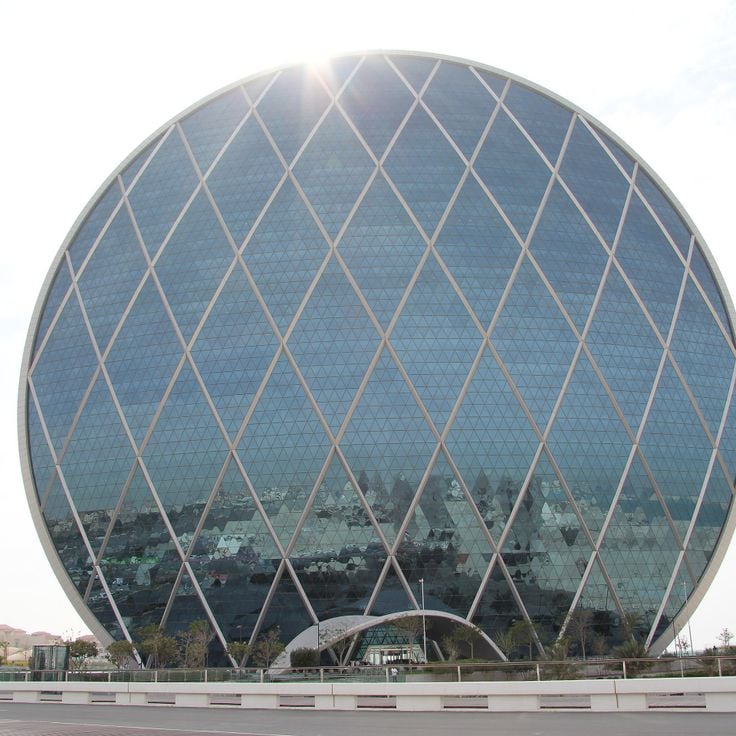
Abu Dhabi, United Arab Emirates
Aldar Headquarters BuildingThe Aldar Headquarters Building rises as a circular skyscraper with a distinctive disk-shaped structure in the Abu Dhabi skyline. This building features an architectural design based on a complex diagrid structural system that enables the round form without traditional interior supports. The circular geometry spans 360 feet (110 meters) in diameter and requires advanced engineering solutions for stability and climate control. The structure serves as an office center and demonstrates the application of innovation in high-rise architecture in the United Arab Emirates.

Shanghai, China
Shanghai TowerThe Shanghai Tower is the tallest building in China, reaching a height of 2,073 feet (632 meters). This skyscraper redefines conventional design through its spiraling upward structure composed of nine cylindrical segments that twist 120 degrees over its entire height. The tower's double-skin glass facade reduces energy consumption significantly through natural insulation and ventilation. Hosting offices, hotels, retail spaces, and observation decks, the building demonstrates advanced engineering techniques in a seismically active area.
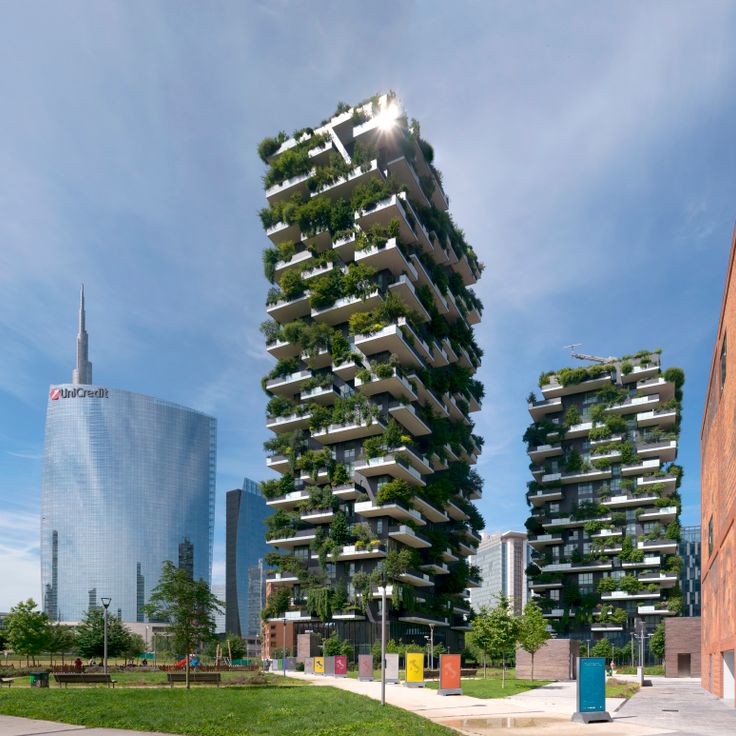
Milan, Italy
Bosco VerticaleThe Bosco Verticale in Milan comprises two residential towers measuring 249 feet and 361 feet in height, hosting over 900 trees and thousands of shrubs on their balconies. Completed in 2014 and designed by Stefano Boeri Architetti, this development integrates urban living with vertical forestation. The vegetation spans 26 floors and creates a microclimate that improves air quality and biodiversity in the urban environment. This project serves as a model for sustainable architecture and demonstrates how high-rise buildings can incorporate ecological functions in densely built areas.